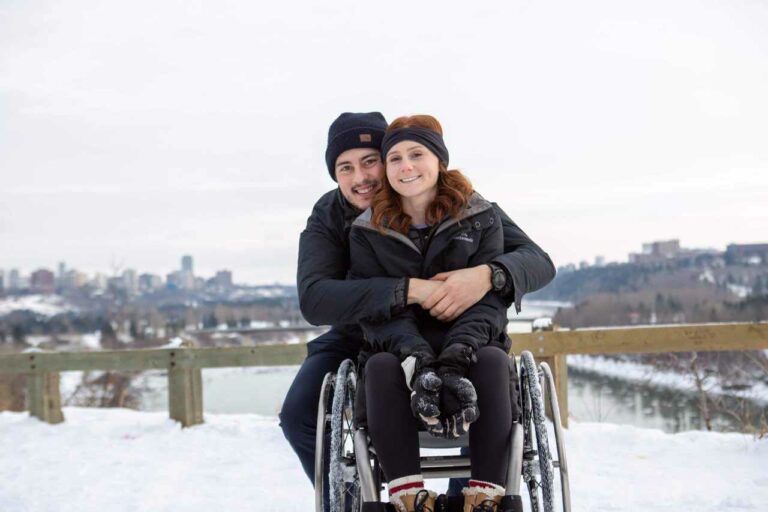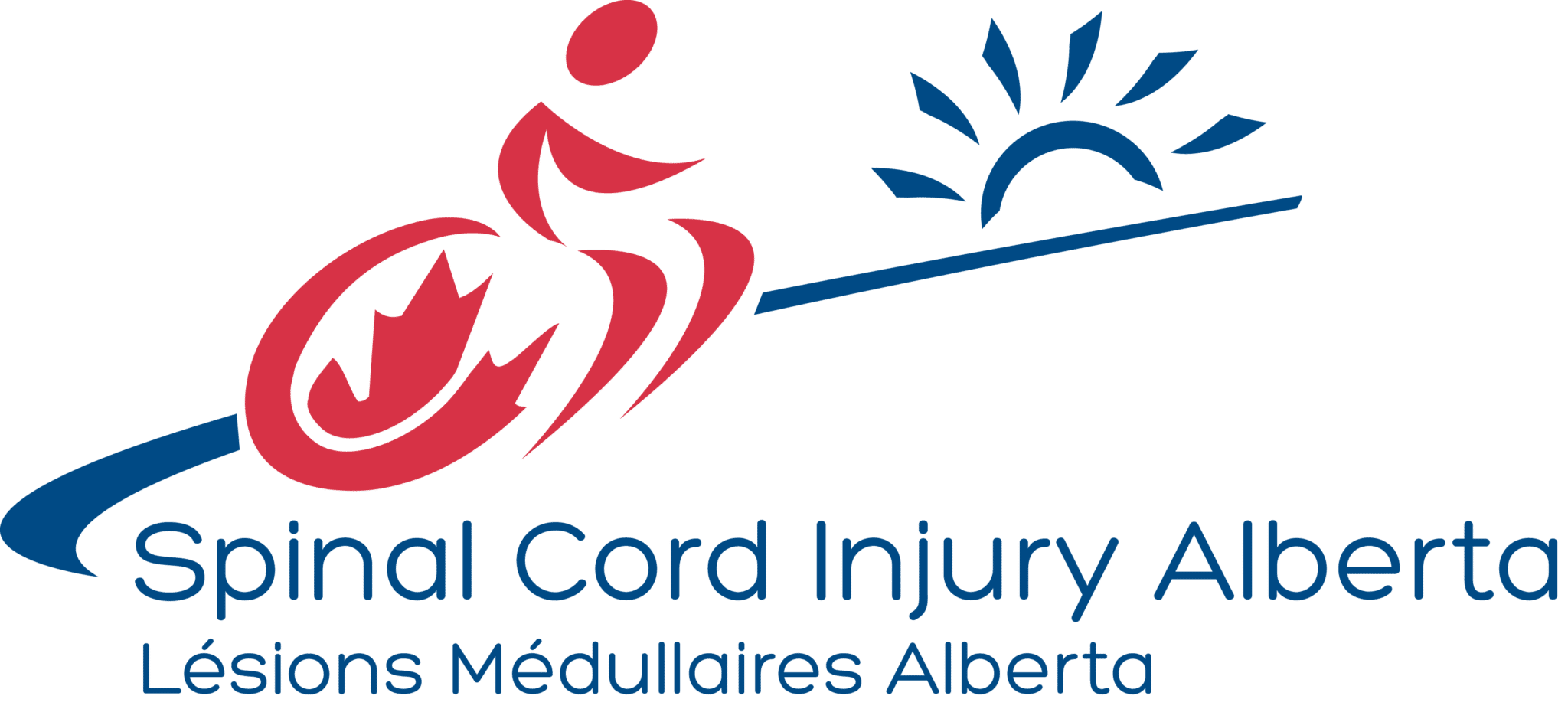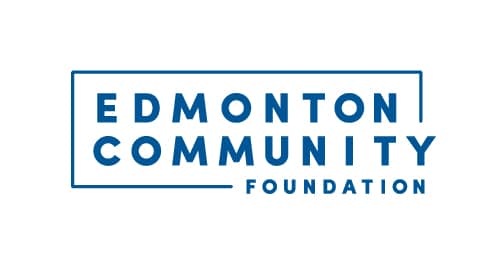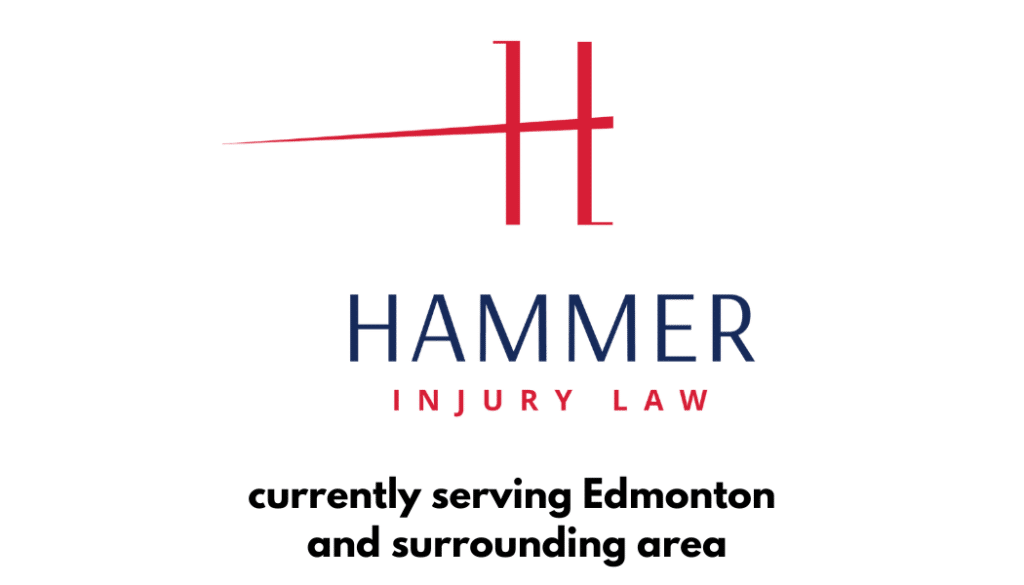Meet Stewart...
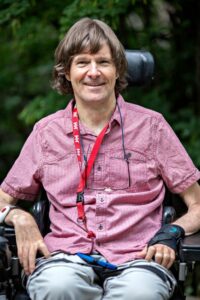
Stewart was 56 when he suffered a C4 traumatic spinal cord injury during a paragliding accident. He was a mechanical engineer, a recreational pilot and inspector for 37 years and held five world records in hang gliding. Immediately after his accident, Stewart remembers that he could not get up or move. “Part of me knew right away,” he recalls. When found by search & rescue and transferred to Foothills Hospital, he had persistent nightmares of not being able to get up. When he woke, Stewart remembers thinking, “That was the dream, and now this is the nightmare.” Stewart could not swallow or move his limbs; he could only move his head slightly. It took him six weeks to learn how to swallow again and then start using an electrical stimulator to move his right arm and feed himself a little bit.
There was no power chair in the hospital, and Stewart felt hopeless more than once, “(They) put me in a chair and park me in a corner… I [wanted to] cease to exist.” Stewart remembered being told he was not progressing anymore. Then he was discharged with “No plan to transition to the community.” Stewart remembers the only positive thing from that year: the peer group talks, and individual support offered by SCI-AB to newly injured at the hospital. He admits that those private conversations with peers were very helpful. Still, he was not ready to be involved with the group events.
Then he met a father who had a daughter with a spinal cord injury, who helped Stewart find accessible housing and connect to resources in the community. At the same time, in 2012, Stewart got involved with SCI-AB’s exercise-based research program at the University of Alberta and SCI-AB’s new Neuro Rehab Centre. Then he started to participate in SCI-AB peer events.
And then, his wife, Julie, gave him Christopher Reeve’s book, “Still Me.” Julie told Stewart about the revolutionary technology of functional electrical stimulation (FES). There were no FES bikes in Calgary back then, and Stewart used to go to Edmonton just so he could use the bike. Stewart’s family and friends started a community fundraiser to raise enough money and eventually purchase an FES bike for Stewart, which he uses to this day, every day. Stewart was also instrumental in helping raise awareness of this technology and secure funding to purchase the first FES bike for SCI-AB’s Neuro Rehab Centre. Stewart’s FES bike was “The anchor on which my existence continued,” he recalls. Stewart was a passionate cyclist (riding his bike rain or shine every day of the year). Regaining the opportunity to cycle with the injury was central to his mental and physical rehabilitation. “When I finish a ride, I feel like a million bucks,” Stewart says with a smile.
Stewart’s dream was to complete a bike ride across Canada, which he started with his friends when he was in his twenties but didn’t finish, because “We got bored at the prairies and took a train [and then] the ride fell apart.” After his injury, Stewart finished that ride on his FES bike. But Stewart had even bigger aspirations. He recently completed a 40,075 km ride on the FES bike, a distance equal to the earth’s circumference! Although, when asked about how he did it, he says he did not plan to do that at first, “After I finished the ride across Canada, I thought ‘so now what?’ [and] I just focused week to week, and it became a part of what I do.” When he is not on the FES bike in his free time, Stewart is a soccer and a Tour de France fan and an avid reader—he’s read 10 books this last year.
But Stewart is not finished breaking the records. His next goal is to work on his arm strength using the FES bike and something he used to do at SCI-AB Neuro Rehab Centre before the pandemic started. He also wants to explore Calgary’s neighbourhoods and “Cover all the pathways in Calgary.”
When asked what he would say to people who are newly injured or diagnosed, Stewart says, “I can tell you what people told me – things are bad, but they are going to be better. The people who really understand what you’re going through are the ones who have been there themselves.”
For Stewart, finding something to do and pushing himself forward is essential. “You’re not alone,” he says. “Try and find a reason to live [and] find things you can do independently, even for a few hours. You are building a new you. There is no easy way out of this. Grief is always there, and that’s okay – you’re alive, and that’s what’s important!”
Want to see a video of Stewart’s story? Click here
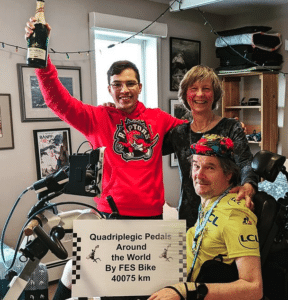
Meet Bridget...
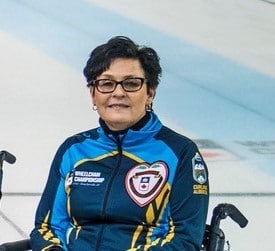
Bridget was only 16 when she suffered a T4 complete and C7 incomplete spinal cord injuries in a car accident. 43 years later, Bridget looks back and says, “I didn’t expect to go as far as I did.”
At the time of her accident, Bridget lived on a family farm in Saskatchewan. She admits that being in a wheelchair in a rural community was very difficult. So, just two years after her injury, at the age of 18, Bridget moved to Regina to work and be closer to the wheelchair community. “They opened my eyes to a whole new world of living that allowed me to expand my thoughts on being in a wheelchair and [realize that] there is so much in the world offered to me,” she recalls.
Shortly after, she married and moved to Calgary, where SCI-AB became a significant part of her life. She reached out and asked for help with equipment, resources in the community and work. In 1989, an SCI-AB employment counsellor helped Bridget to secure a job and connected her to groups of peers in the community. “I could tap into their knowledge about things I can do,” Bridget says. Bridget is thankful to SCI-AB for helping her to get involved with adaptive downhill skiing, disabled sailing, art programs, securing a full-time job, volunteering in peer events and SCI-AB car rallies. She says every time she was interested in doing something, she would call SCI-AB for help, and the staff would connect her to resources in the community.
And then Bridget decided she wanted to be a mother. “I was going to have a family, so I just went ahead and had a family!” However, at the time, there was very little research about paralysis and childbearing, so Bridget was connected to a high-risk clinic, where a team of researchers and doctors enrolled her in pioneering research in spinal cord injuries and pregnancy. While the pregnancy and the delivery were not risk-free, at 37 weeks, she gave birth to a healthy baby boy, now 31, and Bridget cannot be prouder.
Around that same time, Bridget was also part of an SCI-AB women’s group of wheelchair users who met once a month. The number of women in this group grew fast once others found out about Bridget’s successful pregnancy and delivery. Bridget recalls their curiosity about what pregnancy was like for a woman in a wheelchair. Bridget shared her experience openly and honestly, telling all the good and the bad. Soon after, many group members became pregnant and started to bring their children to the meetings. Some of the people Bridget met in those peer groups became her lifelong friends.
But Bridget wanted to try more new things, and sports was one of them. She became interested in wheelchair curling, but the sport was not available for wheelchair users in Alberta. So, she approached Curling Alberta and SCI-AB to set up a “come and try” event. Bridget says, “I’ve got the ball rolling, and SCI-AB reached out to contacts and clients,” and with the help of Curling Alberta, they secured a facility. The event turned out to be a successful endeavour covered by news and was a stepping stone in creating a curling team of wheelchair users. The sport caught on in Calgary, with Bridget heavily involved. She and her team won 3 Canadian National Championships and 10 Provincial Championships throughout her curling career. Bridget was also part of Team Canada for the Paralympics and continued as a coach to win the gold at the 2019 Canadian Nationals. She was inducted into Alberta’s Curling Hall of Fame in 2014.
Nowadays, after retiring from curling, she is focusing on her volunteering as a peer mentor at the Foothills Hospital, playing lawn bowling and spending time with her family. When asked what she would say to a newly injured or diagnosed person, Bridget says, “The early stages are very challenging mentally and physically [but] it is just going to get better. You’re still going to be able to do all the things you used to love, just in a different way. So, you can continue to have an amazing life. Stay strong; it gets so much easier!”
Looking back at her journey through injury, Bridget says, “You have to be very open when you have this life-altering change [and] very willing to try everything that lands in your lap [and] never give up trying new things.” Bridget gave an example of this when she wanted to learn how to golf. She approached a golf pro and asked them to teach her, they took the challenge and helped her, and even though she does not continue to play, she never gave up. “People are amazing out there! So don’t give up on your dreams and hopes; everything is possible. You just have to want to try!”
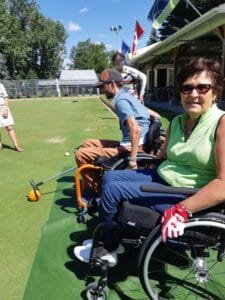
Meet Nicole...
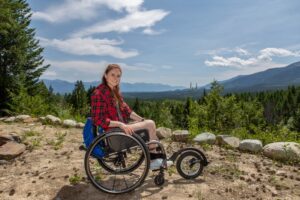
Nicole’s life changed two years ago after being critically injured in a biking accident. Nicole and her partner, Drew, were on vacation in Costa Rica when Nicole’s bike caught an edge, and she fell off the cliff. When admitted to the hospital, Nicole had multiple injuries, including a broken rib cage, contusions, a fractured shoulder, collapsed lungs, and T5 complete spinal cord injury. After stabilizing her spine, Nicole was flown back home to Edmonton, admitted to the University of Alberta Trauma Unit, and then to the Glenrose Hospital to start her rehab. Unfortunately, a few weeks later, the pandemic started, and Nicole found herself isolated from family, friends, and Drew.
Looking back at her time at Glenrose during the pandemic, Nicole recalls she tried not to think about anything else but her mental and physical rehabilitation. “My life was chaos. I didn’t really have the capacity to comprehend much of what was going on, on the outside. So, in that sense, the pandemic did not initially impact my life the way it had with others.” However, when left without in-person visitation, many thoughts crossed her mind. “I was pretty accepting that I wouldn’t walk again – at least not with the medical technology we have available at this moment in time. Not to say that I had accepted or embraced this new life, but the fact that I couldn’t move my legs, combined with the confirmation from doctors, made it clear life was going to look different.”
Nicole remembers thinking, “My life was pretty perfect before; I just finished my degree, I was about to start a new job, I had a great boyfriend (I still do!), I had just finished playing varsity soccer. I was so lucky and privileged… and then I was thrown a huge curveball.” Complicating her adjustment was all the information from the medical staff, most of which made her scared of all the things that can go wrong for a paraplegic.
But Nicole’s positive attitude kept her going. Before Covid hit, she had the chance to be part of a few peer sessions in Glenrose, where she got to know other wheelchair users. “Those peer sessions in Glenrose were a lifesaver for me…seeing other individuals in chairs made me realize that life goes on, and this is how you go on living it.” The experience of the new injury and being isolated from family and friends did not bring her down. She continued to concentrate on her rehabilitation and mental health. She even snuck in Skip the Dishes from time to time, as she admits. Nicole even tried to see the positive in the pandemic, “The world slowed down enough for me to think how I can go back to my life,” she says.
After the rehab and back at home, little by little and with the easing of pandemic restrictions, Nicole started hand cycling with Paralympic Sports Association and connecting with peers in the community through social media and peer groups.
These days Nicole works full-time as a civil engineer. She enjoys camping with Drew and spends time outdoors with her family and friends. But, two years after her injury, Nicole acknowledges that there are still challenging moments, and there likely always will be.
After her injury, Nicole started keeping a journal. Reading through it now, she is amazed at her transformation from “I don’t know if I can be as happy as I ever was,” to “Maybe I can be happy again,” and eventually to “I feel like myself again.” For Nicole, giving back and feeling like she is filling a role was a huge part of her mental and physical recovery. Today, Nicole is driving again, a great accomplishment and a reminder that she can succeed in things she could not do before, making her feel like herself again.
Nicole attributes her success to the support of her family, friends, and boyfriend. “I wouldn’t be able to do this without their support,” she says. They supported her throughout her recovery, raised money for equipment, home adaptations, and all the expenses associated with a new disability. “It can be very expensive to live with a disability. It is really easy to get super angry about it,” she admits.
On the topic of resiliency, Nicole says, “Initially, I thought resiliency was something people either had or didn’t. Even before this injury, I considered myself to have it. But through the individuals I have met through this injury, I realized it is not so black and white. Resiliency grows if you let it. I have met peers facing the worst of odds, and for some, it has taken them years to find that strength to want to keep going– but they all found that growth. And watching the resiliency grow in someone is the true inspirational story.”
When asked if she could share any thoughts with someone who has just been injured or diagnosed, Nicole smiles and replies with SCI-AB’s motto, “Honestly… Adapt. Adjust and Thrive kind of nails it.”
